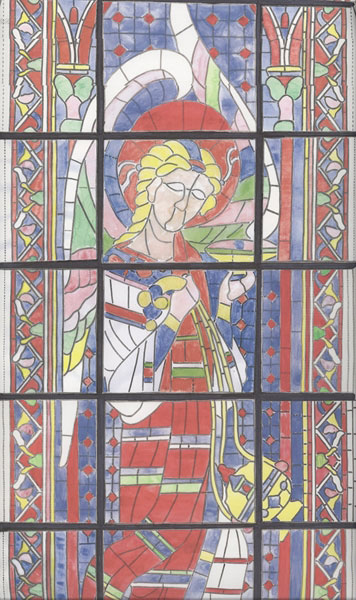Preamble :
Stained-glass has a special role in the public imagination. Mysterious, vibrant, fascinating, impressive in its monumental configuration and yet inherently fragile, the French “stained-glass heritage” is rightfully loved and admired even if all its dimensions (more specifically religious and aesthetic) are complicated and inadequately explained in the works.
For the same reasons conservator specialized in stained-glass is a fascinating job. All the encounters made on field express an unanimous opinion: “What a wonderful and meticulous job …”. Paradoxically a veil of incomprehension surrounds this spontaneous comment because the public ignores the truth about this profession that is usually imagined as romantic, strictly artisanal, quiet and escaping from all kind of economic conflict.
I would like, though this website, to share my passion for a profession and a sublime heritage but also to give an image of this profession at the start of this new century. This website will show the filiation with the traditional art profession – Nivard de Chassepierre, glass artist depicted by Bernard Tirtiaux in “Le Passeur de Lumière”, is without a doubt a brother – but today this stained glass artist job offers several distinctive facets. Creation involves contemporary concepts and new glass technologies; restoration involves professionals who work in the shadow of the original artists. They avoid changing and revisiting the works of art entrusted to them.
I would like to thank those who have enlightened and still illuminate my professional life: my birth relatives, my closest friends and the people who are truly passionate for stained glass. At the beginning of my career I had the chance to meet, Marie Berducou, Michel Petit, Françoise Perrot, Anne and Guy Le Chevallier, Jean-Marie Braguy, Marie-Françoise Dromigny, Gérard Degusseau, Jacky Vivien, Jeannette Weiss-Gruber, Isabelle Pallot-Frossard, George Brunel, Yves Gagneux, Daniel Imbert…to name just a few of them. And just as importantly all the workers who have worked on various projects, they will recognize themselves.











